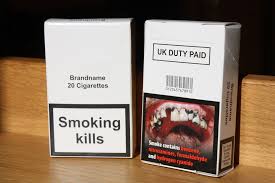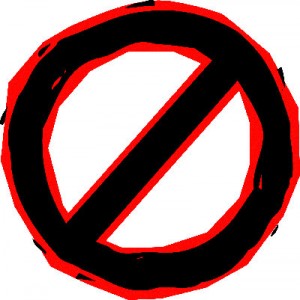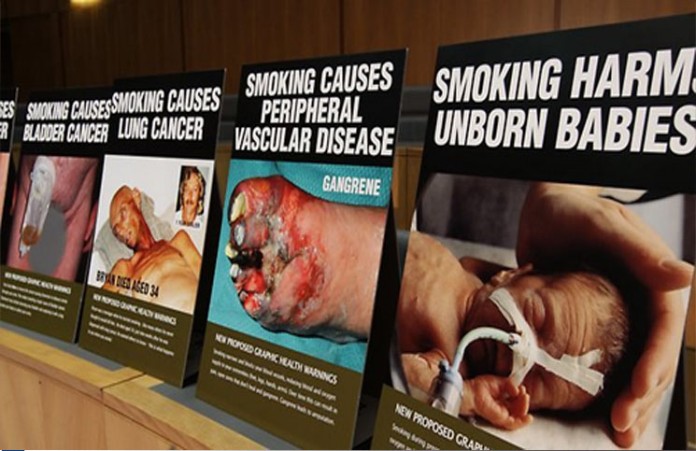In this blog post, Aditi Sampat, Advocate at Nabco Enterprises Pvt Ltd and a student of the Diploma in Entrepreneurship Administration and Business Laws by NUJS, discusses the IPR implications of plain packaging for cigarettes.

Cigarette Laws in India
The very basis of the laws relating to the safeguards and health measures to be assured to all the citizens owes its source of Article 47 of the Constitution of India under the Directive Principles of State Policy. Article 47 states that – ‘It shall be the Duty of the State to raise the level of nutrition and the standard of living and to improve public health The State shall regard the raising of the level of nutrition and the standard of living of its people and the improvement of public health as among its primary duties and, in particular, the State shall endeavour to bring about prohibition of the consumption except for medicinal purposes of intoxicating drinks and of drugs which are injurious to health’.
Giving due respect to Article 47 of the Constitution, the Parliament of India enacted the first legislation with regard to smoking in the form of the Cigarettes (Regulation of Production, Supply, and Distribution) Act 1975. The Act made it mandatory for all tobacco companies to provide a statutory warning on cigarette packets.
The Hon’ble Supreme Court in the landmark judgment of Murli S. Deora vs. Union of India (2001 Supp(4) SCR 650) prohibited smoking at public places like hospital, educational institutions, auditoriums, etc. The Hon’ble Court opined – ‘Tobacco is universally regarded as one of the major public health hazards and is responsible directly or indirectly for an estimated eight lakh deaths annually in the country. It has also been found that treatment of tobacco-related diseases and the loss of productivity caused therein cost the country almost Rs. 13,500 crores annually, which more than offsets all the benefits accruing in the form of revenue and employment generated by tobacco industry’.
As a direct consequence of the judgment was the enactment of the Cigarettes and Other Tobacco Products (Prohibition of Advertisement and Regulation of Trade and Commerce, Production, Supply, and Distribution) Act 2003. The Act extends to the whole of India including the State of Jammu and Kashmir and has been made applicable, apart from cigarettes, to cigars, bidis, pan masala (containing tobacco), khaini, mavva, snuff and any product containing tobacco in any form.
The Act has mentioned very specifically that the Union of India should take control of the Tobacco industry since it is required in the interest of the public. The Act endorses the Judgment of the Hon’ble Supreme Court on the ban of smoking in Public Places and has laid down clear provisions for smoking areas in public areas such as hotels, restaurants, and airports. Also, the Act prohibits advertisements in Cigarettes and other tobacco products and also selling the same to minors. As far as Educational Institution is concerned, selling of cigarette and another tobacco product within 100 yards is also prohibited.
Restrictions are also imposed on the trading, producing, supplying and distributing cigarettes and other tobacco products including printing on the label and package a specified warning in Indian, English and Foreign language as the case may be.
The provisions of the Act extend the powers of the police personnel or an officer of the State Food and Drug Administration to enter the premises or such place where there is sufficient reason to believe that the provisions of the Act are being violated. The power to seize and confiscate are also contemplated by the Act and the person aggrieved can appeal to the Court of Appellate Jurisdiction against any order which may be against his interests.
Punishments in the form of jail and fine are contemplated under the Act in the case of failure of giving specified warning while producing cigarettes or other tobacco products, smoking in public places and advertising cigarettes and tobacco products. The offenses under this Act are bailable and compoundable.
The Act, as is mentioned in its miscellaneous provision, protects the actions of the Central and State Government and its officers against legal actions if the actions were taken in furtherance of the provisions of the Act or in good faith. The Central Government has the power to make such rules on such matters as enumerated under the provisions of this Act.
To strengthen and ensure the safeguards about cigarettes and tobacco related products, another legislation in the form of the Cigarettes and Other Tobacco Products (Packaging and Labelling) Rules, 2008 has been enacted. The Rules mandate the law about the packaging format and a number of statutory warning messages on wrappings of cigarettes and other tobacco products.
In India, in 2014, a Public Interest Litigation was filed in Allahabad High Court to implement the plain packaging rule for cigarettes and other tobacco products. The Court allowed the petition and directed the Union of India to implement the same at the earliest.
On October 15, 2014, another notification was passed by the Central Government which was the Cigarette and Other Tobacco Products (Packaging and Labeling) Amendment Rules 2014 which has following highlights-
- The total area covered by the pictorial and statutory warnings on the packets of cigarettes and Tobacco products has been increased from 60 % to 85 % (60% for pictorial health warning & 25% for textual health warning).
- The textual health warning shall not appear in more than two Indian languages on the packet.
- The Manufacturer details with regard to the name and address, the origin of the product and date of manufacture shall be mentioned on the packet.

The Hon’ble Supreme Court though contemplates plain packaging, however, has directed the Union Health Ministry to ensure that the standards as mentioned above are adhered to strictly and to seize products that do not comply with the standards. Undoubtedly this has led to a shutdown of many of the tobacco factories in protest.
In 2015, a draft Bill was published by the Ministry of Health and Family Welfare to amend the Cigarettes and Other Tobacco Products (Prohibition of Advertisement and Regulation of Trade and Commerce, Production, Supply, and Distribution) Act 2003. The Bill proposed to prohibit the sale of loose cigarettes and indirect advertisements for tobacco products, which have been deemed to be illegal under the Act. The Bill is yet to be passed in the Lok Sabha.
The State of Maharashtra has recently amended the Legal Metrology Act which bans the sale of loose cigarettes by cigarette and bidi manufacturers. Verification of this claim is yet to be undertaken. The State of Jammu and Kashmir has also banned the sale of loose cigarettes and bidis via a notification.
What is Plain Packaging of Cigarettes?
Plain packaging means selling of Cigarettes and other Tobacco products in standardized or generic packs without any attractive trademarks, logos, brand names or colors. The brand name is to be substituted by health warnings. However a small area of the packet has the brand name written in a plain uniform typeface. If plain packaging implemented, every packet of cigarette or other tobacco would appear the same.
The first country to pass the Plain Packaging Law has been Australia when it passes the Tobacco Plain Packaging Act, 2011. The Law mandated plain packaging and selling of cigarettes in drab brown packets with graphic health warnings. The Act came into force on December 1st, 2012 and imposed significant restrictions on the color, shape, and finish of retail packaging for cigarettes and other tobacco products. The Act prohibited the use of trademarks on such packaging, other than in small plain uniform typeface and in addition to the regulatory requirements, textual health messages and graphic warnings have to be displayed on the package.
Another country which has passed the Plain Packaging Laws for Cigarettes and other Tobacco products is the United Kingdom. As recent as 19th May 2016, the English and Wales High Court rejected applications for the judicial review of the Standardised Packaging of Tobacco Products Regulations 2015. The legislation bans the sale of flavored cigarettes such as menthols.
As far as the Indian scenario is concerned, the feasibility of the plain packaging must be judged from the fact that nearly 75% of all cigarettes in India are sold loose with absolutely no enforcement mechanism to check this practice. Undoubtedly, one can dispute the fact whether plain packaging will help given the fact that the buyer does not come in direct contact most of the time with the packaging. Also, the question also arises whether to apply the plain packaging regulations to all tobacco products and above all enforcement of the regulations on the local manufacturers and cottage industries. Amendments to the existing 2003 Act can only be made after addressing the above concerns. Nevertheless, India had supported Australia as it introduced the plain packaging at WTO and was involved in the dispute as a third party. Going by the prevailing trends and India’s stance on the issue, it is quite likely that the introduction of plain packaging will be introduced and implemented in India soon.
Implications of Plain Packaging of Cigarettes on IPR
The Introduction of the plain packaging rule in many of the countries in the world has led to a hue and cry from the Tobacco Industry with regards to violation of the property rights, more specifically related to rights guaranteed under Trademark laws.
The Tobacco Industry has strongly condemned plain packaging by putting forth its disadvantages and believes that it would bring more harm to the society. One of the biggest disadvantages, the Industry argued is that the plain packaging rule will increase counterfeiting of goods since there will be no specific recognition of the brands on the products. The Quality of the product will also be compromised as poor quality tobacco will be sold which will in effect cause harm to the consumers. Also, curtailing the packaging cost would lead to the reduction in the overall cost of the product and hence would attract more consumers.
Further on, the amount spent by the tobacco industry on capital publicizing and popularizing their trademarks and brand names would fade away on the implementation of the plain packaging rule leaving some trademark attorneys without any clients. Additionally, there has been no conclusive proof that plain packaging would necessarily lower the tobacco consumption rate.
Since Australia was the first country to introduce and mandatorily implement the Plain Packaging Law, the same was opposed in a very big way by the Tobacco Industry of Australia contending that plain packaging deprives the Industry of their nationally and internationally recognized trademark rights. The Australian High Court rejected the plea, and the plain packaging rule has survived in Australia despite all opposition.
As far as the United Kingdom is concerned, with regards to the Standardised Packaging of Tobacco Products Regulations 2015, the Counsel for the State argued that trademark is a negative right. Hence the limited use of the trademark shall not take away the rights of the holder. The Court passed the judgment that nevertheless the Regulations permitted the tobacco companies to use their name on the packaging and hence the primary function of the trademark was still being upheld.
The International Trademark Association, which is a global association of trademark owners and professionals, has submitted that the imposition of mandatory plain packaging for cigarettes and other tobacco products would deprive the trademark owners of their valuable property which in contradiction to the international rules which provide for the protection of trademarks.
MARQUES is another dominant trademark association in Europe which has pointed out the adverse effects of the plain packaging rule and its expansion to other industries. It contends that plain packaging would deny one sector to the benefits of Intellectual property and could become a dangerous precedent for other industries. Although the focus as of now is on tobacco products, there is a growing concern that it will be extended to other ‘disfavored’ products such as alcohol, candy, sugars and processed foods.
In conclusion, it can be said without any doubt that the plain packaging rule deprives the trademark owner of their Intellectual Property and also violates the International Standards with regards to Intellectual Property rights, but it is the duty of every State to protect and raise awareness about health and nutrition of her citizens. With the increasing use of Cigarettes and other Tobacco related products, there is an urgent need for strict actions against such use, and also attempt to strike a balance between the Intellectual property rights of the Cigarette and Tobacco manufacturers.
Sources
- http://lawyerslaw.org/the-cigarettes-and-other-tobacco-products-prohibition-of-advertisement-and-regulation-of-trade-and-commerce-production-supply-and-distribution-act-2003/
- http://www.mondaq.com/india/x/448532/Healthcare/Indias+Another+Step+Towards+Plain+Packaging+Of+Cigarettes+And+Tobacco+ProductsAn+Overview+Of+The+Legislations+Present
- http://www.conventuslaw.com/report/india—plain-packaging-health-or-ip/
- http://spicyip.com/2016/06/plain-packaging-a-reality-for-india.html
 Serato DJ Crack 2025Serato DJ PRO Crack
Serato DJ Crack 2025Serato DJ PRO Crack









 Allow notifications
Allow notifications


